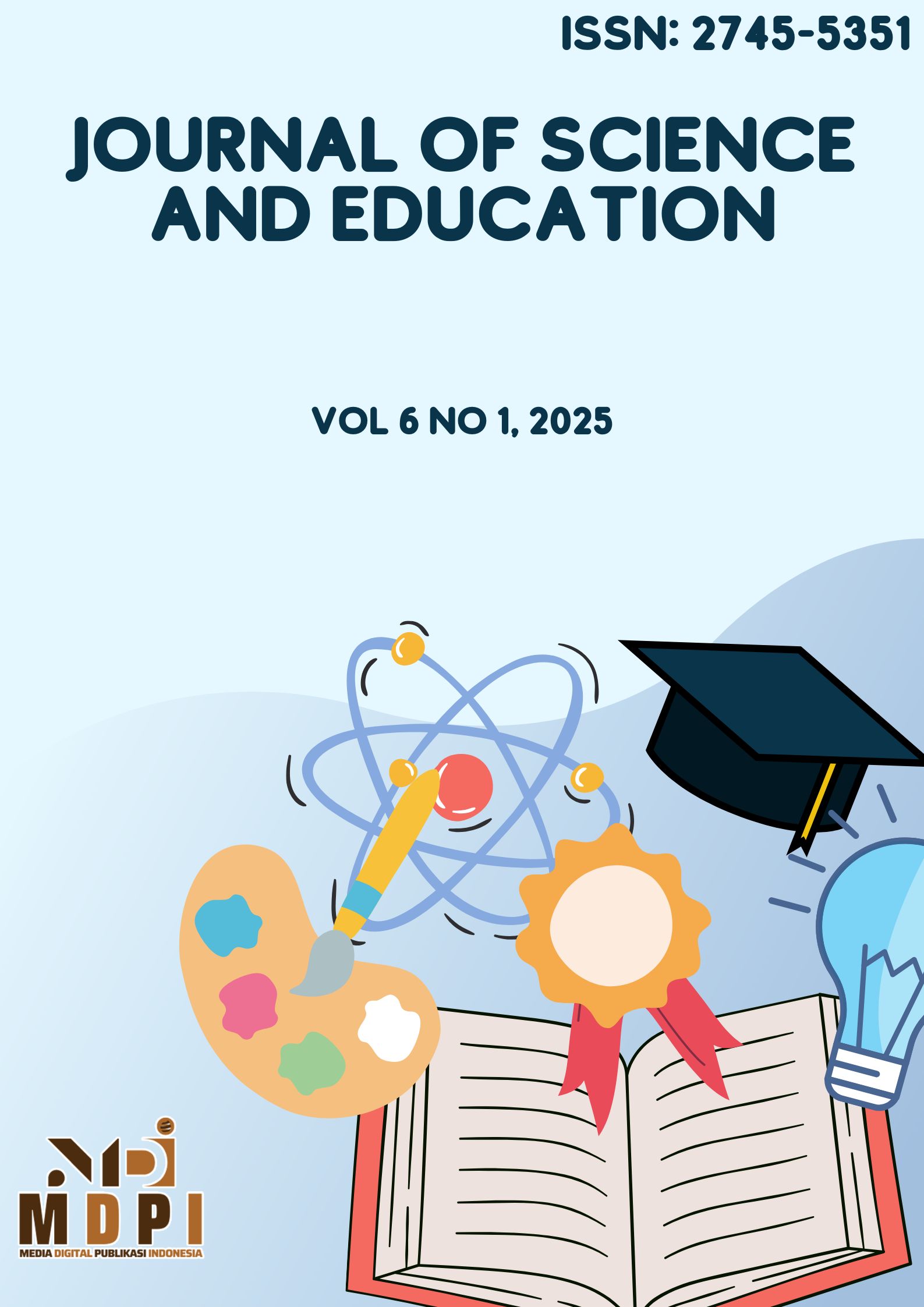Challenges and Strategies of Implementing Nurses’ Professional Identity in Disaster Management in Indonesia: A Literature Review
DOI:
https://doi.org/10.58905/jse.v6i1.596Keywords:
Disaster Management, Indonesia, Nurses, Nursing Education, policy, Professional Identity, Simulation TrainingAbstract
Indonesia’s status as one of the world’s most disaster-prone countries presents unique demands on nurses, whose roles extend beyond clinical care to include leadership, coordination, and rapid decision-making during emergencies. However, the implementation of nurses’ professional identity in disaster management remains underexplored and faces considerable challenges within the Indonesian context. This literature review aims to identify the key challenges and explore context-specific strategies for strengthening the professional identity of nurses involved in disaster management in Indonesia. A systematic literature review was conducted using five databases PubMed, Scopus, ProQuest, Google Scholar, and Garuda guided by PRISMA protocols. Inclusion criteria focused on studies from 2013 to 2023 addressing professional identity in nursing within disaster contexts. Twenty eligible articles were appraised using the CASP checklist and AMSTAR 2 tool. Thematic analysis was applied to synthesize findings. Five major thematic challenges were identified: (1) lack of disaster-focused education and training, (2) role conflict between personal and professional obligations, (3) limited organizational and logistical resources, (4) cultural barriers including gender norms and community perceptions, and (5) unclear or insufficient policies regarding nurses' roles in emergencies. Promising strategies include simulation-based curricula, psychosocial support systems, participatory policy development, interprofessional collaboration, and culturally sensitive educational interventions. Strengthening nurses’ professional identity in Indonesia’s disaster management requires an integrated, multisectoral approach involving education reform, policy innovation, resource provision, and sociocultural adaptation. These efforts are essential for empowering nurses to perform confidently, ethically, and effectively in high-risk settings
Downloads
References
Aghaei, N., et al. (2023). Disaster preparedness in nursing education: A systematic review. Journal of Nursing Education, 62(2), 83–90.
Biddle, B. (1986). Recent Developments in Role Theory. Annual Review of Sociology, 12(1), 67–92. https://doi.org/10.1146/annurev.soc.12.1.67
BNPB. (2024). Buku Data Bencana Indonesia Tahun 2023.Pusdatinkom BNPB.
Braun, V., & Clarke, V. (2006). Qualitative Research in Psychology Using thematic analysis in psychology Using thematic analysis in psychology. Qualitative Research in Psychology, 3(2), 77–101. http://www.tandfonline.com/action/journalInformation?journalCode=uqrp20%5Cnhttp://www.tandfonline.com/action/journalInformation?journalCode=uqrp20
Donaldson, S. P. C. N. E. (2008). Patient Safety and Quality: An Evidence-Based Handbook for Nurses. In book chapter 25.
Fung, O. W. M., Loke, A. Y., & Lai, C. K. Y. (2008). Disaster preparedness among Hong Kong nurses. Journal of Advanced Nursing, 62(6), 698–703. https://doi.org/10.1111/j.1365-2648.2008.04655.x
Geng, Cong, Y. L., Pei, X., & Chen, X. (2021). Simulation in disaster nursing education: A scoping review. Nurse Education Today, 107. https://www.sciencedirect.com/science/article/abs/pii/S0260691721003762?via%3Dihub
Han, S. J., & Yeun, Y. R. (2024). Psychological Intervention to Promote Resilience in Nurses: A Systematic Review and Meta-Analysis. Healthcare (Switzerland), 12(1), 1–17. https://doi.org/10.3390/healthcare12010073
Hoeve, Y. ten, Jansen, G., & Roodbol, P. (2014). The nursing profession: Public image, self-concept and professional identity. A discussion paper. Journal of Advanced Nursing, 70(2), 295–309. https://doi.org/10.1111/jan.12177
ICN. (2019a). Core competencies in disaster nursing version 2.0. International Council of Nurses. https://www.icn.ch
ICN. (2019b). https://admin.icn.ch/resources/publications-and-reports/core-competencies-disaster-nursing-version-20.
Johnson, M., Cowin, L. S., Wilson, I., & Young, H. (2012). Professional identity and nursing: Contemporary theoretical developments and future research challenges. International Nursing Review, 59(4), 562–569. https://doi.org/10.1111/j.1466-7657.2012.01013.x
Khan, Y., Brown, A., Shannon, T., Gibson, J., Généreux, M., Henry, B., & Schwartz, B. (2018). Public health emergency preparedness: a framework to promote resilience. BMC Public Health, 18(1), 1–16. https://www.ncbi.nlm.nih.gov/pmc/articles/PMC6280369/pdf/12889_2018_Article_6250.pdf
Kimin, A., Nurachmah, E., Lestari, F., & Gayatri, D. (2022). Factors affecting nurses’ ability to provide effective care in a disaster response: A review. Journal of Public Health Research, 11(2), 03–03. https://doi.org/10.4081/jphr.2021.2732
Labrague, L. J., Hammad, K., Gloe, D. S., McEnroe-Petitte, D. M., Fronda, D. C., Obeidat, A. A., Leocadio, M. C., Cayaban, A. R., & Mirafuentes, E. C. (2018). Disaster preparedness among nurses: a systematic review of literature. International Nursing Review, 65(1), 41–53. https://doi.org/10.1111/inr.12369
Li, Z. S., & Hasson, F. (2020). Resilience, stress, and psychological well-being in nursing students: A systematic review. Nurse Education Today, 90(April), 104440. https://doi.org/10.1016/j.nedt.2020.104440
Ma, D., Shi, Y., Zhang, G., & Zhang, J. (2021). Does theme game-based teaching promote better learning about disaster nursing than scenario simulation: A randomized controlled trial. Nurse Education Today, 103(April), 104923. https://doi.org/10.1016/j.nedt.2021.104923
Page, M. J., McKenzie, J. E., Bossuyt, P. M., Boutron, I., Hoffmann, T. C., Mulrow, C. D., Shamseer, L., Tetzlaff, J. M., Akl, E. A., Brennan, S. E., Chou, R., Glanville, J., Grimshaw, J. M., Hróbjartsson, A., Lalu, M. M., Li, T., Loder, E. W., Mayo-Wilson, E., McDonald, S., … Moher, D. (2021). The PRISMA 2020 statement: An updated guideline for reporting systematic reviews. The BMJ, 372. https://doi.org/10.1136/bmj.n71
Rao, B. R., Gupta, P., & Roy, A. (2023). Perceived Organizational Support and Job Performance: Mediating and Psycholoigical Role of Organizational Citizenship Behavior. Journal for ReAttach Therapy and Developmental Diversities, 6(7), 161–172.
Thobaity, A. Al. (2024). 2024--Overcoming challanges of disaster preparedness.pdf.
ul-Hassan, F. S., Ikramullah, M., Khan, H., & Shah, H. A. (2021). Linking Role Clarity and Organizational Commitment of Social Workers through Job Involvement and Job Satisfaction: A Test of Serial Multiple Mediation Model. Human Service Organizations Management, Leadership and Governance, 45(4), 337–351. https://doi.org/10.1080/23303131.2021.1895400
Veenema, T. G., Griffin, A., Gable, A. R., Macintyre, L., Simons, R. N., Couig, M. P., Walsh, J. J., Lavin, R. P., Dobalian, A., & Larson, E. (2016). Nurses as Leaders in Disaster Preparedness and Response-A Call to Action. Journal of Nursing Scholarship, 48(2), 187–200. https://doi.org/10.1111/jnu.12198
White, D.-B. (2019). Translation of Evidence Into Nursing and Healthcare, 3rd Edition. https://doi.org/10.1891/9780826147370
WHO. (2021a). Health Emergency and Disaster Risk Management Framework. Geneva: World Health Organization.
WHO. (2021b). State of the world’s nursing 2020: Investing in education, jobs and leadership. Geneva: WHO. https://www.who.int/publications/i/item/9789240003279
Downloads
Published
How to Cite
Issue
Section
License
Copyright (c) 2025 Ati Surya Mediawati, Rachmat Susanto

This work is licensed under a Creative Commons Attribution-ShareAlike 4.0 International License.

















